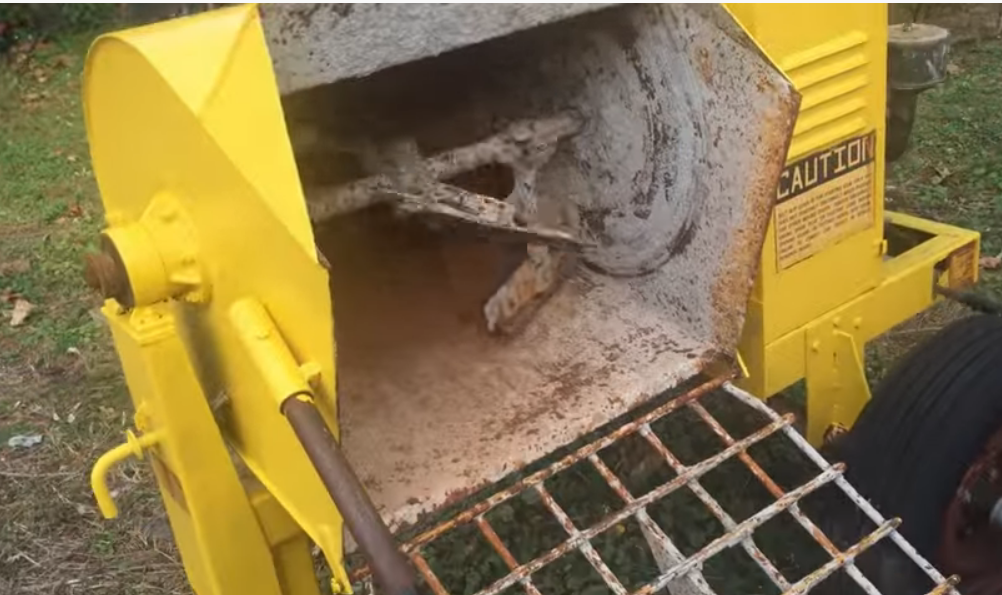I built a throne in my front yard. Does that sound crazy?
It may sound a bit less crazy when you learn the reason for it: My wife threatened me with a bird bath.
I have a problem with bird baths. They suggest a relationship with the natural world that I don’t subscribe to. They suggest a level of existential complacency that makes me want to break something.
So, how about instead of a bird bath I build a huge fucking throne. Like, out of concrete.
There’s a reason I’m married to my wife.
“Okay,” she said.
As someone who works mostly in the digital realm, there’s something compelling about how unforgiving real building materials can be. Mistakes are easy, and correcting them is difficult. Everything has to be carefully planned.
The planning is part of the fun—sketching with pencil and paper, neat little measurements and multiple views. No matter how carefully I plan however I always manage to fuck something up—usually in the stupidest way. Like the equivalent of putting the pants on before the underwear, or trying to back out of the garage in first gear.
I rarely get angry when I make these mistakes. I welcome the humbling. It feels old-fashioned, somehow. A rebuke to the easy carelessness that comes with having lived for so long with the aid of an omniscient phone.
Eventually you begin to understand how unlikely perfection is. The mistakes aren’t just random anomalies. Mistakes actually want to happen. They are actively lying in wait. As a builder your job is to anticipate the ambush, and elude it. How many times have I congratulated myself for eluding one such ambush only to discover that I’ve walked right into another?
My only hope was to keep the plan for the throne as simple as possible. It was to be on the tall side, because no throne worth claiming is easily ascended, and also because I liked the idea of a huge, brutalist hunk of concrete in my front yard. The seat alone was to be nearly four feet off the ground.
The plan called for three molds: the main mold was around 2.5 feet square and five feet tall. The other two molds carved out negative space inside the first mold: one for the seat and the other for a hollow under the seat. I figured it would take maybe one day to make the molds and another to pour the concrete.
My knowledge of concrete as a building material is fairly limited. In the past I’ve only used it to fill Sonotubes for deck supports. But we are currently living in a golden age of YouTubery, where you can learn from the mistakes of every idiot with a DIY streak and a penchant for exhibitionism.
A perusal of the available videos (nothing on throne building, but plenty on how to pour concrete planters) highlighted one common problem area: removing the molds once the concrete has set. Suggestions on this point included building the molds from laminated wood or some other smooth surfaced material, coating the inside of the mold with motor oil, and constructing the molds so they can be easily disassembled.
Incorporating these suggestions into my plan, I set to work. The molds came together fairly easily. Somehow I managed not to screw up the measurements too badly, despite several errors in spatial reasoning. I had a little trouble estimating exactly how much concrete I’d need, as most of the web-based concrete estimators were devised for slabs, not thrones. But some envelope math eventually yielded a figure of around 25 80-lb bags.
I rented a two-bag cement mixer, plus a neighborhood kid to help with the heavy lifting. Almost as an afterthought I decided to brace the main mold with winch straps, given that a ton of concrete would be pressing against the mold’s joints. This was my one serious error: not positioning the winch straps low enough, where the pressure would be greatest. I only realized my mistake later, when concrete began to ooze from a ruptured seam near the base. I rebraced the mold as best I could, but the throne had already acquired its minor flaw[mb1] . I could accept this. I had too great a respect for the materials to assume I was automatically entitled to perfection.
The drying took six days. During this time I would notice the throne now and then, lurking beneath a blue tarp, and be shocked. We tend not to disrupt the physical landscape of our lives. Mostly we pass through it quietly, on worn paths, altering nothing. And by and large this is entirely sensible, as the physical world is actually very difficult to alter. I’m still reeling, for instance, at the size of the bill for remodeling my bathroom. How could it possibly have cost five figures?
The physical world is obdurate. It likes how it is and wants to stay that way. But it’s precisely for this reason that it can be useful to put your hands on it now and then and bully it into some new form. Not just by way of reminding yourself how much you suck as a carpenter, but also to stay keenly aware of the fact that everything you take to be static background can be changed.
One day I was at the beach and fell into conversation with a guy who was building a studio for himself behind his house. As someone who recently spent five hours displacing 30 cubic feet of reality and erecting a one-ton throne in its stead I instantly recognized his zeal. Sonotubes were involved. The ground where he lived was too rocky for a borer, so he had to rent a Bobcat.
“A fuckton of fun,” he said. “If you ever get the opportunity to rent one, you should.”
This was sound advice, I replied, and I aimed to follow it. I went on to suggest that he position his studio such that it offered a clear view of where the next project might go. He agreed that this was a good idea, but had to confess that the next project might need to be his house, which was on the verge of falling down.
At last the day of the unveiling arrived. I was excited. I was going to be the first guy on my street with a throne in his yard. I liked the idea of people stopping by to use it, until they got around to erecting their own.
The outer shell came off easy, revealing great gray planes of concrete, still damp at the base. The right front corner where the mold had split was only a little disfigured. The plan was to surround the throne with ivy, which would eventually cover the flaw. Once the ivy began ascending the sides it would take on the look of a ruin, summoning bygone kings to mind, evil, mad or just.
The mold that made the seat was hardest to remove, due to a typically stupid oversight, and like so many YouTube knuckleheads I had to resort to hammer and chisel. But in the end the throne stood revealed, a great, gray, solemn presence, like one of those heads on Easter Island. Just to look at it jostled my own inner landscape, altering things that I assumed were fixed.
Several weeks have passed, and I remain oddly aware of the throne as I move through my days. Wondering about it, approaching it now and then to run a hand over its rough hide. Curiously, I have not actually sat in it yet. Possibly I prefer it as a symbol. Or as something for others to use when taken by that craving for sovereignty.
There probably will come a point when I do finally ascend the throne myself. But now that I’ve made it I can’t help feeling that the throne is itself a kind of a trap, another ambush, even more subtle, that I must somehow elude. It’s a trap I don’t quite understand yet. But it’s helpful to have it front of me where I can see it, day after day, and try to understand what it means.






